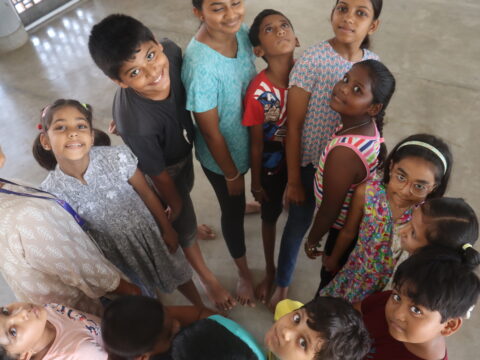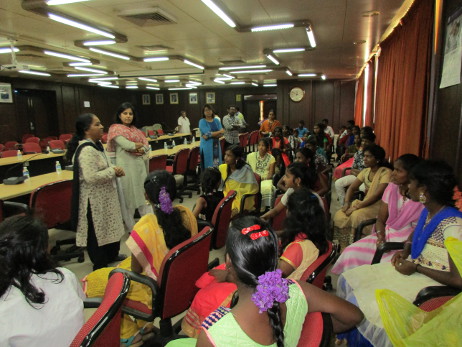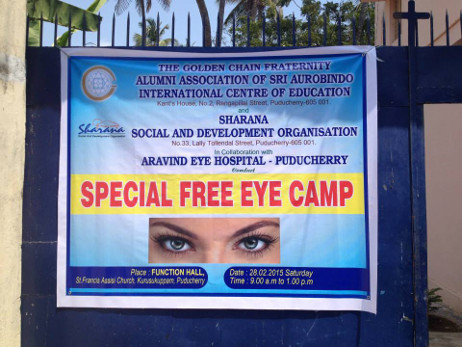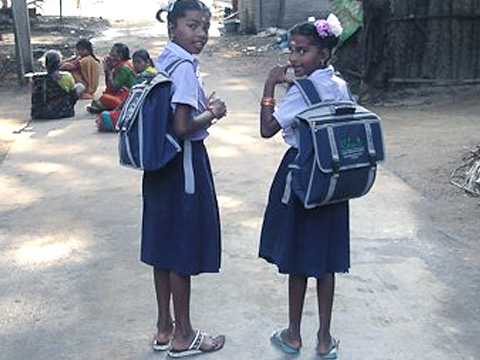Penned by Sarthak, who is interning with us this year. Sarthak works in the Seeds of Change program, Language Lab program as a Spoken English teacher and supports Communications among other activities. He is a sports enthusiast and has regularly attended Seeds of Change sessions in all the 3 areas we work in.
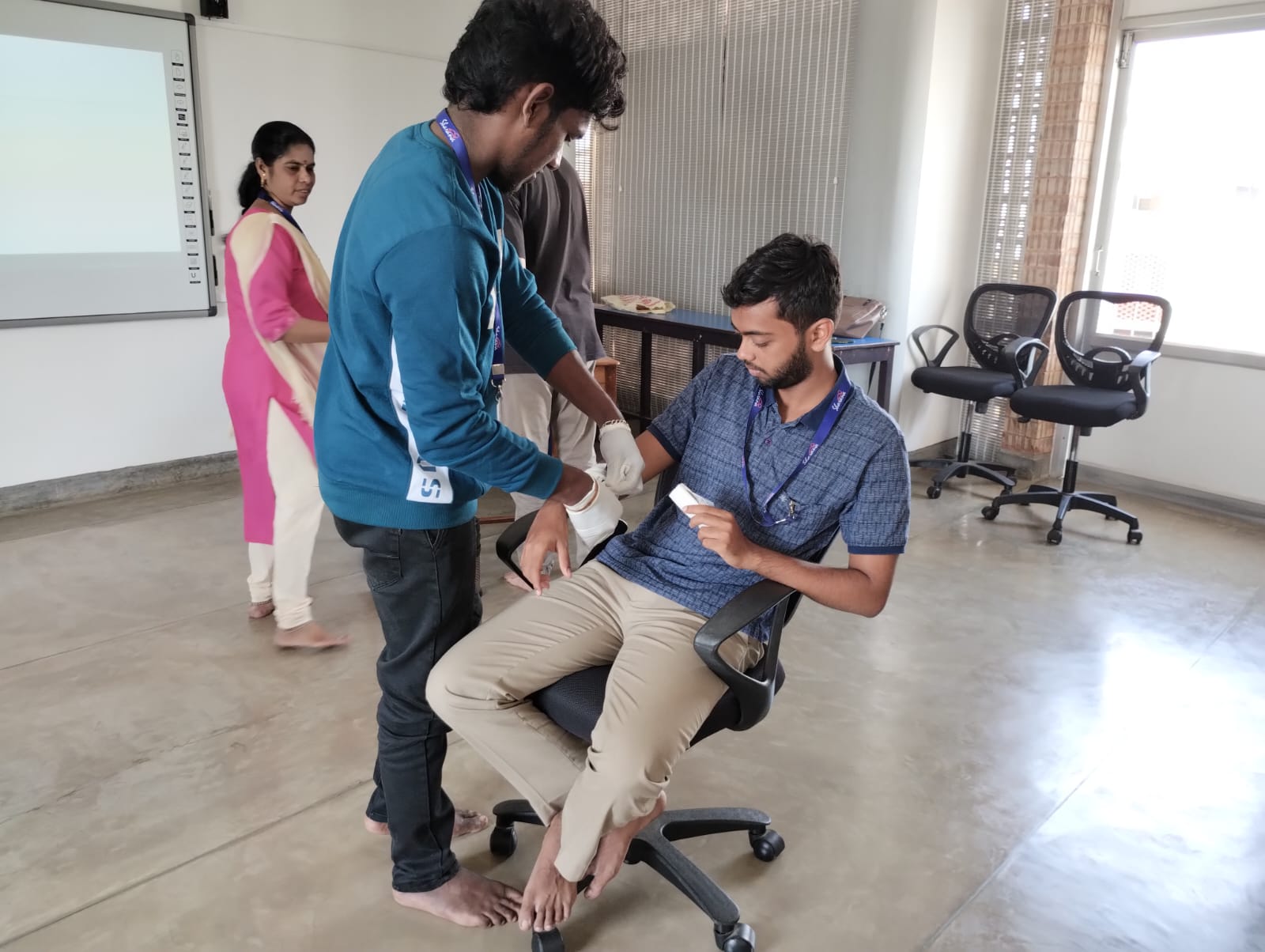 In March, 10 team members of the Seeds of Change program including Project Lead Ms. Harshitha, Social Workers Ms. Bhavani and Mr. Chandru, Field Workers Ms. Sugumari and Mr. Pandian, Educators Ms. Muniammal, Ms. Jegadeshwari, Ms. Jayasri, Mr. Angalan and myself attended a 2-hour-long first aid workshop facilitated by Intern Tom Loiseau and Health Worker Lakshmi.
In March, 10 team members of the Seeds of Change program including Project Lead Ms. Harshitha, Social Workers Ms. Bhavani and Mr. Chandru, Field Workers Ms. Sugumari and Mr. Pandian, Educators Ms. Muniammal, Ms. Jegadeshwari, Ms. Jayasri, Mr. Angalan and myself attended a 2-hour-long first aid workshop facilitated by Intern Tom Loiseau and Health Worker Lakshmi.
Ms. Lakshmi is a key member of our team and we are happy to have her back after a break. She has been running our rural Community Centre Dispensary for more than two decades.
Tom has a degree in Nursing and is pursuing a Masters in International Solidarity and Social Action Management. He interned at Sharana from January to March 2023.
First Aid plays a crucial role during sports, and although our team ensures a safe environment, accidents can happen while playing. The aim of the workshop was to train the team to handle minor injuries. Along with the first aid kit, there are several techniques each team member should know so that they can deal with emergency situations. This was not the first time our Seeds of Change team went through such a session. For the educators, it was the first time as they got an insight to what first aid is and what are the necessary actions to be taken in the event of an emergency situation.
 We work in areas where there is a chance that the children get injured because of the terrain they play in. During the session I realised there is a lot more to first aid than simply putting a band-aid. A few months ago, I accidentally cut open my finger with a knife at night, and I did not have a first aid kit to bandage myself. I called a friend who rushed with his kit, and helped me bandage the wound and stop the bleeding. This is when I understood the importance of always keeping a first aid kit.
We work in areas where there is a chance that the children get injured because of the terrain they play in. During the session I realised there is a lot more to first aid than simply putting a band-aid. A few months ago, I accidentally cut open my finger with a knife at night, and I did not have a first aid kit to bandage myself. I called a friend who rushed with his kit, and helped me bandage the wound and stop the bleeding. This is when I understood the importance of always keeping a first aid kit.
In the workshop, there were several important techniques demonstrated, along with providing explanations with each one of them.
- Cleaning and bandaging a superficial wound
This process was explained in detail, with Tom and Lakshmi demonstrating how a wound should first be thoroughly cleansed using sterile compresses and a saline solution. I had thought that one should use cotton while cleaning but Tom specifically asked the team to not use cotton because the fibres can enter the wound and create an infection. After cleaning the wound with saline, one should use Hydrogen Peroxide to disinfect the wound and bandage it with the sterile compresses. One might think to use an antiseptic in these situations. It is important to note that H2O2 should always be used primarily to stop bleeding
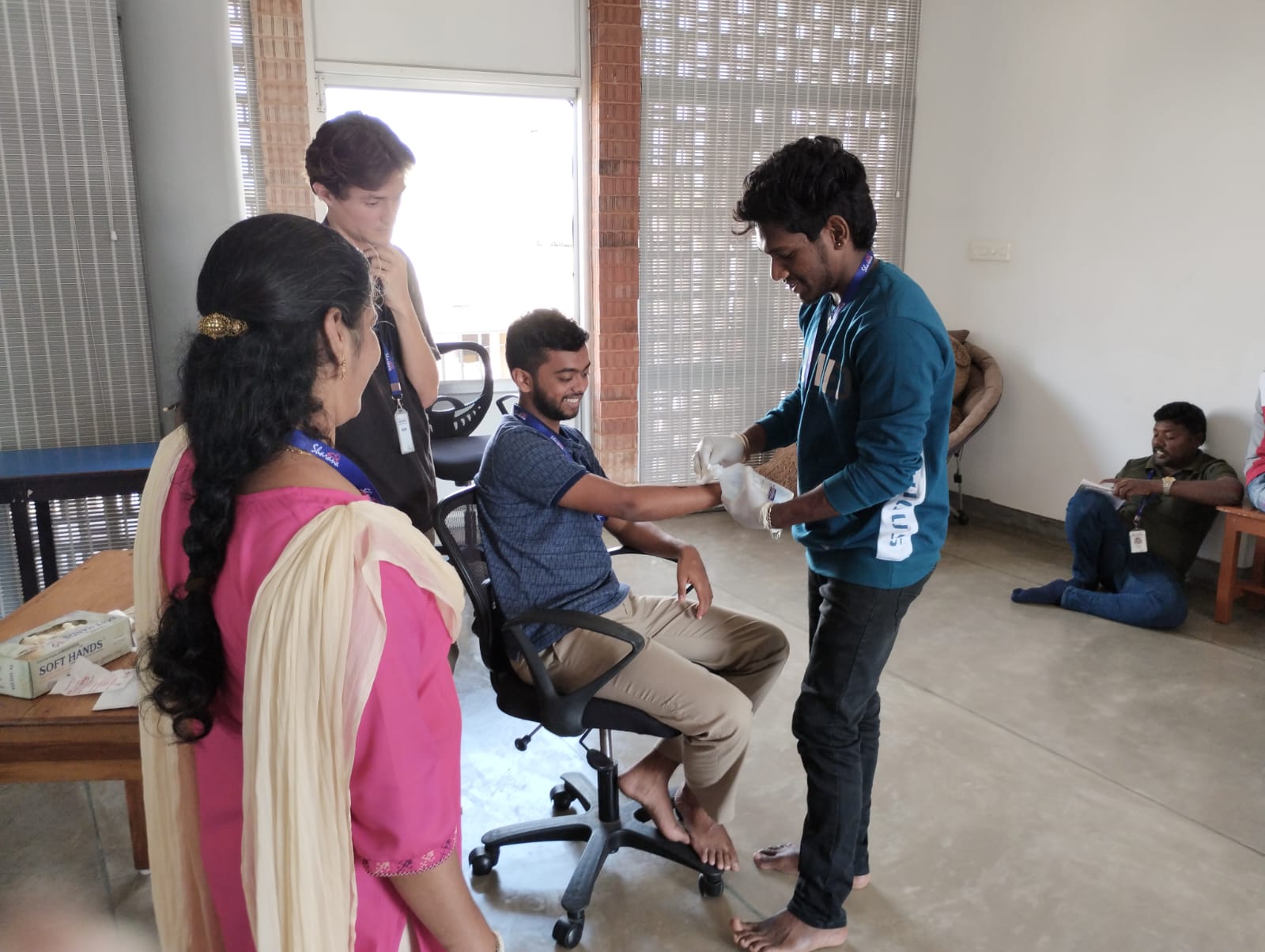 Dealing with first degree Burns
Dealing with first degree Burns
First degree burns are common amongst children and can be quite painful for some time. The procedure to deal with this is simple:
-Pour normal temperature water a little above the wound so that it flows towards the wound instead of directly pouring the water on it.
-Keep the water for a few minutes and apply coconut oil or Aloe Vera gel on the wound.
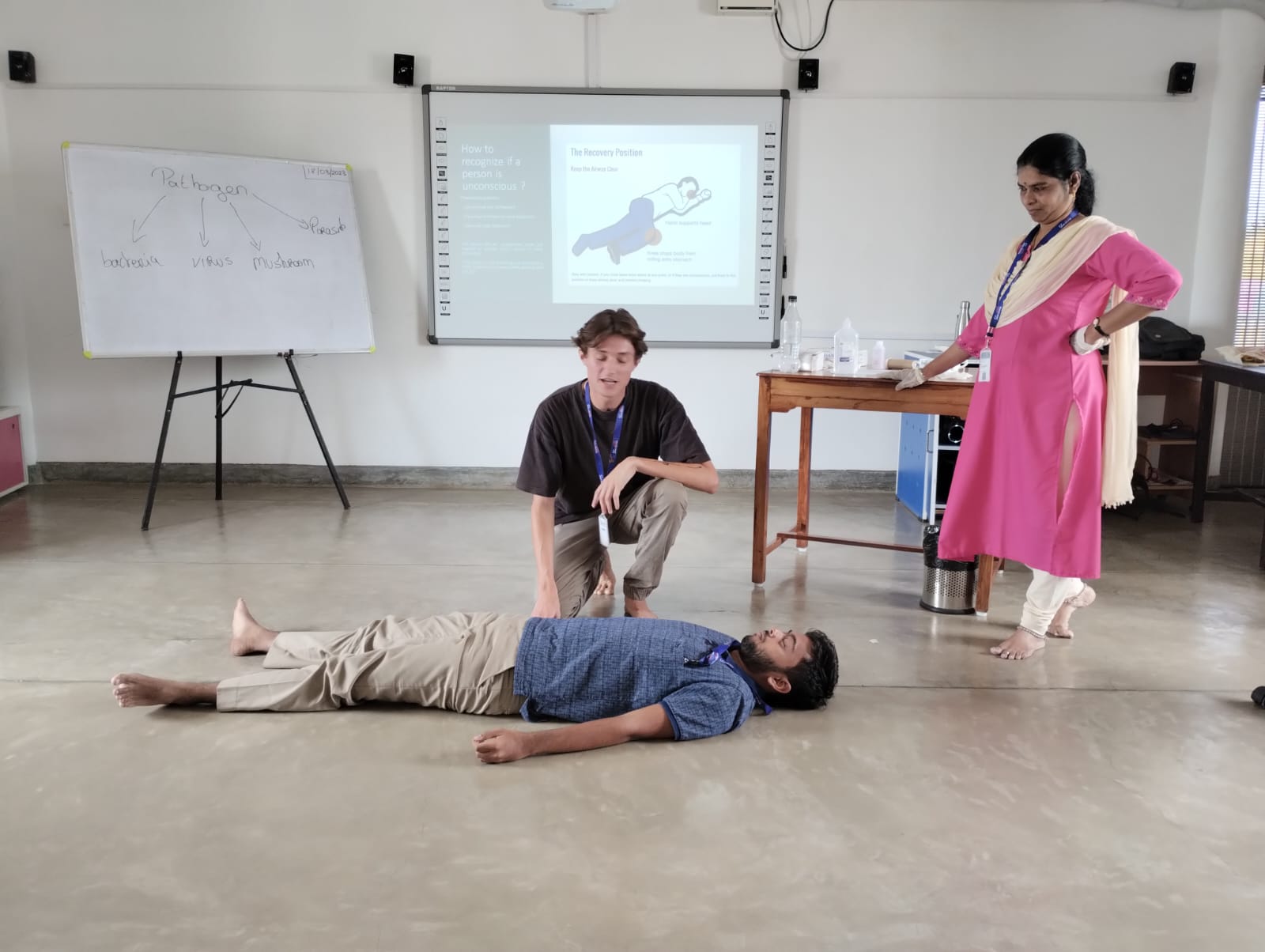 Dealing with Vagal Discomfort (Fainting)
Dealing with Vagal Discomfort (Fainting)
Lift the legs so that blood flow is restored to the brain. Give small portions of sugar/ fruit juice.
- Techniques used for saving someone from choking (partial & complete obstruction)
This happens when food enters the trachea. There are two types of choking: partial obstruction and complete obstruction. During partial obstruction, it is advised that you encourage the patient to keep coughing. One should never pat on the back, something I used to always do earlier. In the event of severe choking, one should give five hard blows between the shoulder blades and if it still doesn’t go, one should give five abdominal thrusts. Hold with one fist on the belly button, and with the other hand press inwards and upwards.
- What to do if somebody is unconscious but breathing
It may not happen very often, but what does one do if someone is unconscious but breathing? In order to understand if the person is unconscious, one needs to ask the person three questions:
- -What is your name?
- -Can you shake my hand?
- -Can you open your eyes?
If the person does not respond to any of these questions, then he/she is unconscious. One should then fold one leg, put one hand on the ear, and turn right.
It was an insightful workshop and we hope that we are able to deal with emergency cases and first-aid situations better during the Seeds of Change sessions.We hope to delve deeper and educate ourselves more in the subject in our follow up sessions with Ms. Lakshmi.







